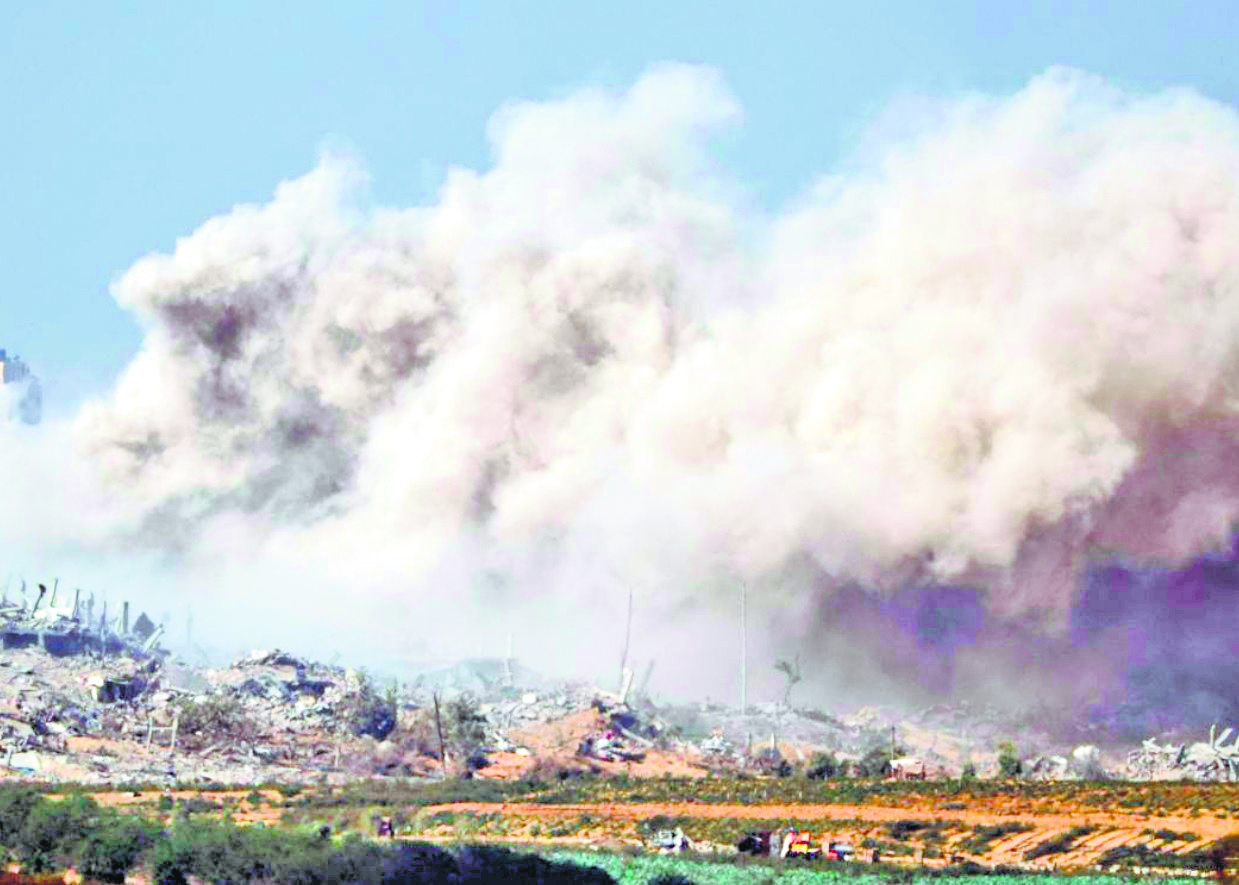Israeli shelling and airstrikes killed at least 37 people, most of them sheltering in tents, near the southern Gaza city of Rafah on Monday night and Tuesday, according to witnesses, emergency workers, and hospital officials. This area had been hit by strikes days earlier, causing a deadly fire in a camp for displaced Palestinians.
The tent camp fire has sparked international outrage, even among some of Israel’s closest allies, due to the military’s escalating offensive in Rafah. In response to the incident, Spain, Norway, and Ireland formally recognized a Palestinian state on Tuesday.
The Israeli military suggested that the blaze might have been caused by secondary explosions, potentially from Palestinian militants’ weapons. The initial probe into the fire, issued Tuesday, indicated that the munitions used by the military were too small to have caused such a large fire, but the investigation is ongoing. Prime Minister Benjamin Netanyahu described the fire as a “tragic mishap.”
Since the assault on Rafah began on May 6, more than 1 million people have fled the city, according to the U.N. agency for Palestinian refugees. Many were already displaced multiple times in the nearly eight-month conflict between Israel and Hamas. Families are now scattered across makeshift tent camps and other war-ravaged areas.
Recent strikes have targeted areas west of Rafah, which were not under evacuation orders. Israeli ground troops and tanks are operating in eastern Rafah, central parts of the city, and along the Gaza-Egypt border. Shelling on Monday night and Tuesday morning hit Rafah’s Tel al-Sultan district, killing at least 16 people, according to the Palestinian Civil Defense and the Palestinian Red Crescent.
“It was a night of horror,” said Abdel-Rahman Abu Ismail, a Gaza City resident now sheltering in Tel al-Sultan. He described hearing constant explosions and seeing jets and drones overhead, reminiscent of a previous heavy bombing campaign in his neighborhood of Shijaiyah.
The United States and other Israeli allies have warned against a full-scale offensive in Rafah, with the Biden administration stating that such an action would cross a “red line” and refusing to supply offensive arms for it. On Friday, the International Court of Justice ordered Israel to halt its Rafah offensive, though it lacks the power to enforce this order.
On Tuesday afternoon, an Israeli drone strike hit tents near a field hospital west of Rafah, killing at least 21 people, including 13 women, according to Gaza’s Health Ministry. Ahmed Nassar, a witness, said his relatives were among the victims, noting that most of those in the tents had fled from Gaza City earlier in the war.
Netanyahu has pledged to continue the offensive, aiming to dismantle Hamas and retrieve hostages taken during the Oct. 7 attack that initiated the war. The Israeli military released satellite images of what it claims was a Hamas rocket launch site near the targeted area of the tent camp fire, asserting that their munitions alone could not have caused such a large blaze.
The conflict has forced many to flee Rafah, with families seeking refuge in the crowded Muwasi area or Khan Younis, another heavily damaged southern city. Sayed al-Masri, a Rafah resident, described the worsening situation and the challenges of accessing humanitarian aid due to the fighting.
Gaza’s Health Ministry reported that two medical facilities in Tel al-Sultan are out of service due to nearby bombings, leaving medics, patients, and displaced people trapped inside. Most hospitals in Gaza are no longer operational, and Rafah’s Kuwait Hospital shut down after a strike killed two health workers.
The World Health Organization expressed concern over the overwhelming casualties from Sunday’s strike and fire, highlighting the shortage of supplies and skilled medical personnel. Dr. Margaret Harris noted the difficulty of providing necessary intensive care for severe burns in the current conditions.
The war began with a surprise attack by Hamas and other militants on southern Israel on Oct. 7, killing around 1,200 civilians and abducting about 250. Israel responded with a massive offensive, resulting in over 36,000 Palestinian deaths, according to Gaza’s Health Ministry. The fighting has displaced about 80% of Gaza’s 2.3 million population, with parts of the territory experiencing famine.
The conflict in Rafah has made it nearly impossible for humanitarian groups to distribute aid. Although the Israeli military claims to have allowed hundreds of trucks through the Kerem Shalom crossing, aid groups report difficulties in accessing the aid due to ongoing fighting. The U.N. has managed to collect aid from only about 170 trucks over the past three weeks, far below the 600 trucks a day that are needed.














